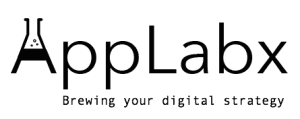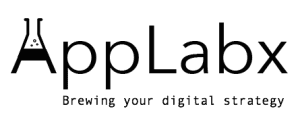Key Takeaways
- Effective SEO starts with thorough keyword research and strong website structure for better crawlability and user experience.
- High-quality, targeted content combined with authoritative backlinks drives sustainable traffic and higher Google rankings.
- Continuous performance monitoring and strategy adaptation are crucial for maintaining rankings and long-term SEO success.
Starting a new online business is an exciting journey filled with opportunities and challenges. However, one of the most significant hurdles many new entrepreneurs face is gaining visibility in an increasingly crowded digital marketplace. With millions of websites competing for attention, simply launching a website is not enough. To attract targeted visitors and convert them into customers, your business must rank prominently on search engines, particularly Google. Achieving a position on Google’s first page is often the difference between online success and obscurity.

Search Engine Optimization (SEO) is the foundational strategy that enables new online businesses to improve their organic search rankings and drive sustainable, high-quality traffic to their websites. Unlike paid advertising, SEO builds long-term value by aligning your website with the search intent of potential customers. When executed correctly, SEO helps your business appear in front of users actively searching for products or services you offer, increasing the likelihood of engagement and sales.
For new businesses, the SEO landscape can seem complex and overwhelming. There are countless strategies, tools, and ranking factors to consider, from keyword research and website structure to content creation and backlink building. Yet, understanding and implementing the right first steps can set the stage for lasting online growth and competitive advantage. This blog post simplifies SEO for new online businesses by breaking down the process into five essential steps you can follow immediately to begin your journey toward Google’s first page rankings.
In this comprehensive guide, you will learn how to identify the best keywords that your target audience uses, optimize your website for both users and search engines, develop compelling and relevant content, build credible backlinks, and continuously monitor your SEO performance to adapt your strategy. These steps are designed not only to improve your rankings but also to establish your brand’s authority and trustworthiness in your niche.
Whether you are launching an e-commerce store, a service-based website, or a content platform, mastering these foundational SEO techniques will give your business the visibility it needs to thrive. By the end of this guide, you will have a clear roadmap to implement effective SEO practices tailored for new online businesses, helping you attract organic traffic, increase conversions, and grow your brand’s online presence.
But, before we venture further, we like to share who we are and what we do.
About AppLabx
From developing a solid marketing plan to creating compelling content, optimizing for search engines, leveraging social media, and utilizing paid advertising, AppLabx offers a comprehensive suite of digital marketing services designed to drive growth and profitability for your business.
AppLabx is well known for helping companies and startups do top-class SEO.
At AppLabx, we understand that no two businesses are alike. That’s why we take a personalized approach to every project, working closely with our clients to understand their unique needs and goals, and developing customized strategies to help them achieve success.
If you need a digital consultation, then send in an inquiry here.
SEO for New Online Businesses: Your First 5 Steps to Google Page One Rankings
- Conduct Thorough Keyword Research
- Optimize Your Website Structure and Technical SEO
- Create High-Quality, Targeted Content
- Build Authoritative Backlinks
- Monitor Performance and Adapt Your Strategy
1. Conduct Thorough Keyword Research
Keyword research is the foundation of any successful SEO strategy, especially for new online businesses. It involves identifying the search terms your potential customers use when looking for products or services like yours. Effective keyword research helps you target the right audience, understand user intent, and optimize your content to rank higher on Google.
Why Keyword Research Matters for New Online Businesses
- Targeted Traffic: Attract visitors who are actively searching for what you offer.
- Content Direction: Inform your content strategy with relevant topics based on real search queries.
- Competitive Edge: Identify keyword opportunities where competition is lower but search volume is sufficient.
- Improved ROI: Focus your marketing efforts on high-intent keywords to increase conversion rates.
Types of Keywords to Focus On
| Keyword Type | Description | Example for an Online Fitness Store |
|---|---|---|
| Short-tail Keywords | Broad and general terms (1-2 words) | “Fitness equipment” |
| Long-tail Keywords | Specific phrases (3+ words), lower volume | “Affordable home fitness equipment 2025” |
| Local Keywords | Geo-targeted search terms | “Fitness equipment store in Chicago” |
| Transactional Keywords | Indicate buying intent | “Buy treadmill online with free shipping” |
Steps to Conduct Keyword Research
- Brainstorm Seed Keywords
- Start with basic words related to your business.
- Think about your products, services, industry terms, and customer pain points.
- Example: For a new online bookstore, seed keywords could be “books,” “novels,” “reading,” “literature.”
- Use Keyword Research Tools
- Google Keyword Planner: Free tool to find keyword ideas and search volume.
- Ahrefs or SEMrush: Paid tools offering competitive analysis and keyword difficulty scores.
- Ubersuggest: Budget-friendly tool for keyword suggestions and SEO metrics.
- Analyze Search Volume and Keyword Difficulty
- Search Volume: Average monthly searches for a keyword; indicates demand.
- Keyword Difficulty (KD): A score showing how hard it is to rank for the keyword.
- Prioritize keywords with moderate to high volume but low to medium difficulty.
- Consider User Intent
- Informational: Searching for information (e.g., “how to start online business”).
- Navigational: Looking for a specific brand or site (e.g., “Nike official store”).
- Transactional: Ready to purchase or take action (e.g., “buy running shoes online”).
- Ensure your chosen keywords align with your business goals and content type.
- Identify Long-Tail Keywords for Early Wins
- Long-tail keywords usually have lower competition, making them ideal for new businesses.
- They attract more qualified traffic and better conversion rates.
- Example: Instead of “laptops,” target “best budget laptops for students 2025.”
Example Keyword Research Matrix for a New Online Yoga Store
| Keyword | Search Volume | Keyword Difficulty | User Intent | Priority Level |
|---|---|---|---|---|
| Yoga mats | 12,000 | 45 | Transactional | Medium |
| Beginner yoga poses | 8,000 | 30 | Informational | High |
| Buy eco-friendly yoga mat | 1,200 | 20 | Transactional | High |
| Yoga classes online | 9,500 | 50 | Transactional | Medium |
| Best yoga pants for women 2025 | 2,000 | 25 | Transactional | High |
Tips for Maximizing Keyword Research Results
- Group Keywords by Topic: Cluster related keywords into themes to create comprehensive content hubs.
- Use Google’s “People Also Ask” and Related Searches: Explore additional keyword ideas and understand user questions.
- Analyze Competitor Keywords: Use tools like Ahrefs to see which keywords competitors rank for and find gaps.
- Regularly Update Keyword List: SEO trends and search behavior evolve, so revisit keyword research periodically.
Visual Guide: Keyword Research Process Flowchart
| Step | Description | Tools/Resources |
|---|---|---|
| 1. Seed Keyword Brainstorming | List basic keywords related to your niche | Internal brainstorming, team input |
| 2. Expand Keyword List | Use research tools for suggestions | Google Keyword Planner, Ahrefs |
| 3. Analyze Metrics | Evaluate volume, difficulty, and intent | SEMrush, Ubersuggest |
| 4. Prioritize Keywords | Select keywords balancing traffic and competition | Custom scoring matrix |
| 5. Plan Content Strategy | Map keywords to content types | Content calendar, SEO planner |
By conducting thorough keyword research, your new online business can build a targeted SEO strategy that aligns with user intent and market demand. This step ensures that every piece of content you create has the best chance of ranking well and attracting qualified traffic, laying a strong foundation for your journey toward Google’s first page.
2. Optimize Your Website Structure and Technical SEO
Optimizing your website structure and addressing technical SEO are critical steps for new online businesses aiming to secure Google’s first page rankings. A well-organized, fast, and technically sound website improves user experience, helps search engines crawl and index your content effectively, and reduces ranking barriers.
Understanding Website Structure for SEO
- Website Structure Defined:
- Refers to how your website’s pages, content, and navigation are organized.
- A clear hierarchy improves usability and SEO performance.
- Key Elements of SEO-Friendly Website Structure:
- Logical Hierarchy: Home > Categories > Subcategories > Individual Pages
- URL Structure: Clean, descriptive URLs with relevant keywords
- Internal Linking: Links between pages to distribute authority and guide users
- Breadcrumb Navigation: Helps users and search engines understand the page’s location
- Example of a Logical Website Hierarchy for an Online Clothing Store:
- Home
- Men’s Clothing
- T-Shirts
- Jackets
- Women’s Clothing
- Dresses
- Accessories
- Men’s Clothing
- Home
Technical SEO Fundamentals to Implement
- Mobile-Friendliness
- Google uses mobile-first indexing, meaning the mobile version of your site is prioritized.
- Ensure responsive design so the site adapts to different screen sizes.
- Test your website using Google’s Mobile-Friendly Test tool.
- Example: A blog with responsive images and a collapsible menu improves mobile user experience and ranking.
- Page Speed Optimization
- Fast-loading websites reduce bounce rates and improve rankings.
- Use tools like Google PageSpeed Insights or GTmetrix to evaluate speed.
- Key speed factors to optimize:
- Compress images without quality loss (e.g., WebP format)
- Minify CSS, JavaScript, and HTML
- Leverage browser caching
- Use Content Delivery Networks (CDNs)
- Example: Compressing images reduced page load time from 5 seconds to 2 seconds for an e-commerce homepage.
- Secure Website with HTTPS
- Google favors secure sites; HTTPS is a ranking factor.
- Obtain an SSL certificate and configure your site to redirect HTTP to HTTPS.
- Example: Switching to HTTPS boosted trust and slightly improved rankings for a new online consulting firm.
- Structured Data Markup (Schema.org)
- Helps search engines understand your content context (products, reviews, events).
- Enhances search listings with rich snippets, increasing click-through rates.
- Use tools like Google’s Structured Data Testing Tool to validate markup.
- Example: Adding product schema resulted in rich snippets showing ratings and prices on Google SERPs.
- XML Sitemap Creation and Submission
- Lists all important pages to guide search engine crawlers.
- Automatically update sitemap when new content is published.
- Submit sitemap to Google Search Console and Bing Webmaster Tools.
- Robots.txt Optimization
- Controls which pages search engines can crawl or avoid.
- Prevent indexing of duplicate content or admin pages.
- Example: Blocking /wp-admin/ directory improved crawl efficiency for a WordPress site.
- Canonical URLs
- Prevent duplicate content issues by specifying the preferred version of a page.
- Use canonical tags especially for e-commerce sites with product variants.
Website Structure and Technical SEO Checklist for New Online Businesses
| Task | Purpose | Tools/Resources | Priority |
|---|---|---|---|
| Mobile-Friendly Design | Optimize for mobile users | Google Mobile-Friendly Test | High |
| Optimize Page Speed | Improve load time and user experience | Google PageSpeed Insights, GTmetrix | High |
| Implement HTTPS | Secure website and improve trust | SSL Certificate Providers (Let’s Encrypt) | High |
| Create XML Sitemap | Facilitate crawling and indexing | Yoast SEO, Google Search Console | High |
| Optimize Robots.txt | Control crawler access | Robots.txt Tester | Medium |
| Use Canonical Tags | Avoid duplicate content penalties | Google Search Console, Yoast SEO | Medium |
| Add Structured Data (Schema) | Enhance search appearance | Schema.org, Google Structured Data Testing Tool | Medium |
| Improve URL Structure | SEO-friendly, descriptive URLs | CMS URL settings | High |
| Implement Breadcrumb Navigation | Better UX and SEO | CMS plugins, Manual coding | Medium |
| Internal Linking Strategy | Distribute link equity and guide visitors | Screaming Frog, Ahrefs | High |
Example: URL Structure Best Practices
| Good URL Example | Poor URL Example | Reason |
|---|---|---|
| www.example.com/mens-shoes/running-shoes | www.example.com/page?id=12345 | Clear hierarchy and keyword inclusion |
| www.example.com/blog/seo-tips-for-startups | www.example.com/article234 | Descriptive and readable |
| www.example.com/product/organic-green-tea | www.example.com/prod?cat=789 | Keywords included, user-friendly |
Internal Linking Strategy for New Businesses
- Link from high-authority pages to new content to help with indexing and ranking.
- Use descriptive anchor text that includes relevant keywords.
- Avoid excessive linking; keep links natural and helpful to users.
- Example: On a blog about online marketing, link “SEO best practices” to a dedicated SEO guide page.
Visual Matrix: Mobile-Friendliness vs Page Speed Impact on SEO
| Factor | Impact on SEO Ranking | User Experience Impact | Tools to Measure |
|---|---|---|---|
| Mobile-Friendliness | Very High | Very High | Google Mobile-Friendly Test, BrowserStack |
| Page Speed | High | Very High | Google PageSpeed Insights, GTmetrix |
| Secure HTTPS | Medium | High | SSL Labs, Browser security warnings |
Optimizing your website’s structure and technical SEO is not a one-time task but an ongoing process. For new online businesses, getting these fundamentals right ensures that Google’s crawlers can easily navigate, understand, and rank your website, while visitors enjoy a fast, secure, and intuitive browsing experience. This solid foundation accelerates your path to Google page one rankings and long-term online success.
3. Create High-Quality, Targeted Content
Creating high-quality, targeted content is the cornerstone of SEO success for any new online business. Well-crafted content not only attracts and engages users but also signals to Google that your website is authoritative, relevant, and valuable. Quality content drives organic traffic, improves dwell time, lowers bounce rates, and encourages backlinks—all critical SEO ranking factors.
Why High-Quality Content Matters for SEO
- Enhances Search Visibility
- Relevant, keyword-optimized content ranks higher in Google search results.
- Builds Authority and Trust
- Consistently valuable content positions your brand as an expert in your niche.
- Increases Engagement and Conversion
- Informative content addresses user intent, leading to higher engagement and sales.
- Generates Natural Backlinks
- Valuable resources get shared and referenced by other websites organically.
Types of SEO-Friendly Content for New Online Businesses
| Content Type | Purpose | Example |
|---|---|---|
| Blog Posts | Educate, inform, and attract search traffic | “10 Best Fitness Apps for Beginners 2025” |
| Product/Service Pages | Drive conversions for offerings | “Premium Yoga Mats – Eco-Friendly” |
| Category Pages | Improve e-commerce navigation & SEO | “Men’s Running Shoes” |
| FAQs | Address common customer questions | “Shipping & Returns FAQ for Our Customers” |
| How-To Guides | Provide step-by-step solutions | “How to Start an Online Business in 2025” |
| Case Studies | Showcase real customer success stories | “How Our SEO Service Increased Sales by 150%” |
| Videos & Infographics | Engage visual learners and boost dwell time | Product demos, visual guides |
How to Create SEO-Optimised, High-Quality Content
1. Understand and Match User Intent
- Informational Intent: Users seeking knowledge (e.g., “How to choose running shoes”)
- Navigational Intent: Users searching for a specific brand (e.g., “Nike official site”)
- Transactional Intent: Users ready to take action (e.g., “Buy yoga mats online”)
- Align content format and tone with the user’s intent to improve relevance and ranking.
2. Conduct Topic and Keyword Research
- Use keywords identified in Step 1.
- Supplement with tools like AnswerThePublic, Google’s “People Also Ask,” and Reddit forums.
- Example for an online tea store: Target keywords like “best organic green tea,” “benefits of drinking green tea,” and “buy green tea online.”
3. Write Comprehensive and In-Depth Content
- Cover all subtopics related to the main keyword.
- Use subheadings (H2, H3, H4) to organize content for both users and search engines.
- Example: For “How to Start an Online Business,” cover steps such as choosing a niche, creating a website, legal setup, and marketing strategies.
4. Incorporate Primary and Secondary Keywords Naturally
- Place primary keywords in:
- Title tag
- Meta description
- URL
- First 100 words
- H1 and subheadings (H2-H3)
- Use secondary and semantic keywords throughout the body to boost topical authority.
5. Optimize for Readability and Engagement
- Use short paragraphs (2–4 sentences).
- Bullet points and numbered lists for clarity.
- Use images, infographics, and videos where appropriate.
- Example: A tutorial on “Setting Up a Shopify Store” includes step-by-step screenshots to guide users visually.
6. Add Internal and External Links
- Internal links to related pages improve SEO and user navigation.
- External links to authoritative sites enhance credibility.
7. Include a Strong Call-to-Action (CTA)
- Direct users to take the next step (buy, subscribe, contact).
- Example CTA: “Ready to grow your online store? Contact our SEO experts today.”
SEO Content Structure Example
| Section | Description | Keyword Focus |
|---|---|---|
| Title | Captivating, keyword-rich | “Best Yoga Mats for Beginners in 2025” |
| Introduction | Address user intent | Include main keyword within the first 100 words |
| H2 – Product Benefits | Why the product is valuable | “Benefits of Eco-Friendly Yoga Mats” |
| H2 – How to Choose | Buying guide or tutorial | “How to Choose the Right Yoga Mat” |
| H2 – Reviews or FAQs | Build trust with users | “Top FAQs About Yoga Mats” |
| CTA | Guide user to purchase or inquiry | “Order Your Yoga Mat Now with Free Shipping” |
On-Page SEO Best Practices Checklist
| Element | Best Practice | Example |
|---|---|---|
| Title Tag | 50-60 characters, include main keyword | “Affordable SEO Tools for Small Businesses” |
| Meta Description | 150-160 characters, compelling and keyword-rich | “Discover top SEO tools to grow your business.” |
| URL | Short, descriptive, includes keyword | www.site.com/seo-tools |
| Heading Tags (H1-H3) | Organize content, include keywords where appropriate | H1: Best SEO Tools 2025 |
| Image Alt Text | Describe images with keywords | alt=“Eco-friendly yoga mat” |
| Internal Linking | Link to relevant content | Link “SEO strategies” to SEO guide |
| Content Length | Aim for 1,500–2,500 words for in-depth articles | Longer guides outperform shallow content |
| Keyword Placement | Naturally placed in key locations | First paragraph, subheadings, conclusion |
Content Quality vs Word Count Matrix
| Content Type | Ideal Word Count | Quality Focus | Ranking Impact |
|---|---|---|---|
| Blog Posts | 1,500 – 2,500 | In-depth, comprehensive | High |
| Product Descriptions | 300 – 800 | Unique, feature-focused | Medium |
| Landing Pages | 500 – 1,200 | Clear CTA, benefits-oriented | High |
| FAQs | 200 – 700 | Concise answers, keyword-focused | Medium to High |
| How-To Guides | 2,000 – 3,500 | Detailed steps, multimedia, authoritative | Very High |
Example: Blog Topic Cluster Strategy for an Online Pet Store
| Pillar Page | Cluster Content Examples | Keywords Targeted |
|---|---|---|
| Dog Food Buying Guide | “Best Organic Dog Food,” “Dry vs Wet Dog Food,” “Dog Nutrition FAQs” | Dog food, organic dog food, dog nutrition |
| Pet Training Resources | “How to Train a Puppy,” “Best Tools for Dog Training,” “Puppy Socialization Tips” | Puppy training, dog training, training tools |
| Pet Health and Wellness | “Common Dog Allergies,” “Preventing Fleas Naturally,” “Pet Vaccination Schedule” | Dog allergies, flea prevention, pet vaccinations |
Visual: Content Funnel Alignment with SEO
| Funnel Stage | Content Type | Example Keyword | Purpose |
|---|---|---|---|
| Awareness | Blog Posts, Infographics | “Best workout routines for beginners” | Attract traffic, educate |
| Consideration | Comparison Posts, Buying Guides | “Best budget laptops vs premium laptops” | Help decision-making |
| Conversion | Product Pages, Landing Pages | “Buy noise-canceling headphones” | Drive sales, generate leads |
High-quality, targeted content not only satisfies user intent but also signals to search engines that your website deserves to rank. For new online businesses, following a structured approach to content creation with SEO at its core ensures a competitive edge in driving organic growth and establishing brand authority.
4. Build Authoritative Backlinks
Backlinks are one of the most powerful ranking factors in Google’s algorithm. When other authoritative websites link to your content, it signals to search engines that your website is credible, trustworthy, and valuable. For new online businesses, building high-quality backlinks is essential for improving domain authority, driving organic traffic, and climbing to Google’s first page.
Why Backlinks Are Critical for SEO
- Improve Domain Authority (DA) and Page Authority (PA)
- Higher DA increases the likelihood of ranking for competitive keywords.
- Enhance Search Engine Trust
- Links from reputable sites serve as endorsements.
- Drive Referral Traffic
- Quality backlinks send targeted visitors directly to your website.
- Boost Indexing and Crawl Rate
- Search engines prioritize crawling and indexing sites with strong backlink profiles.
Types of SEO Backlinks
| Backlink Type | Description | Example |
|---|---|---|
| Editorial Backlinks | Earned naturally when content is cited | A blog cites your guide on “eCommerce SEO” |
| Guest Post Backlinks | Links within articles written for others | A guest post on Moz linking to your SEO tool |
| Business Profile Links | Created on directories and profiles | Yelp, Crunchbase, LinkedIn company profile |
| Niche Directory Links | Relevant industry-specific directories | Clutch (for agencies), Behance (for creatives) |
| Resource Page Links | Featured on curated resource pages | “Top Tools for Startups” linking to your tool |
| Broken Link Building | Replacing dead links with your content | Find a dead link on a blog, offer yours instead |
| HARO (Help A Reporter Out) | Get featured in media by contributing info | Featured in Forbes or Business Insider |
Metrics That Define a High-Quality Backlink
| Metric | Description | Ideal Value |
|---|---|---|
| Domain Authority (DA) | Authority score of the domain | 40+ (Higher is better) |
| Page Authority (PA) | Authority score of the page | 30+ (Higher is better) |
| Spam Score | Measures potential spam signals | Below 5% |
| Relevance | Is the linking site relevant to your niche? | High |
| Dofollow vs. Nofollow | Dofollow passes SEO value | Prioritize Dofollow |
| Traffic Volume | Monthly organic traffic of the linking site | 5,000+ is ideal |
Proven Backlink Building Strategies for New Online Businesses
1. Guest Posting on Relevant Websites
- Reach out to blogs and publications in your industry.
- Offer high-quality content in exchange for a backlink.
- Example: A startup SaaS company writing a guest post titled “Top 5 Automation Tips for Small Businesses” on a productivity blog.
2. Broken Link Building
- Find websites in your niche with broken outbound links.
- Offer your relevant content as a replacement.
- Tools: Ahrefs, Screaming Frog, Broken Link Checker.
- Example: Discover a broken link on a marketing blog’s resource page and suggest your updated SEO guide as a replacement.
3. Leverage HARO (Help A Reporter Out)
- Respond to journalist queries for expert quotes.
- Get featured in high-authority publications like Forbes, HubSpot, and Business Insider.
- Example: A digital marketing expert quoted in an Entrepreneur article about online trends.
4. Resource Page Link Building
- Search for “inurl:resources” + “[your keyword]”.
- Pitch your content to be included in resource lists.
- Example: A cybersecurity firm gets their free “Password Security Checklist” featured on a technology safety resource page.
5. Partner with Complementary Businesses
- Co-author content or collaborate on webinars.
- Exchange backlinks on relevant pages (not link schemes).
- Example: A web design agency partners with an SEO agency to share resources on each other’s websites.
6. Submit to Niche Directories and Business Listings
- List your business in industry-relevant directories.
- Improves local SEO and generates backlinks.
- Example: An SEO agency lists itself on Clutch, GoodFirms, and DesignRush.
Example Backlink Outreach Email Template
| Subject Line | Pitch Example |
|---|---|
| Resource for Your Article | “Hi [Name], I noticed your article on [Topic]. I recently created a [Resource] that complements it. Would you consider adding it to your page?” |
Backlink Quality Matrix
| Backlink Source | Domain Authority | Relevance | Spam Score | Link Type | Priority |
|---|---|---|---|---|---|
| Forbes.com | 95 | Medium | 1% | Dofollow | High |
| Niche Marketing Blog | 50 | High | 2% | Dofollow | High |
| Local Chamber Directory | 40 | High | 0% | Dofollow | Medium |
| Reddit Comment | 92 | Variable | 8% | Nofollow | Low |
| Wikipedia | 100 | High | 0% | Nofollow | Medium |
| Low-Quality Directory | 15 | Low | 15% | Dofollow | Avoid |
Link Velocity: How Fast Should You Build Backlinks?
| Website Age | Recommended Backlink Growth Rate | Reason |
|---|---|---|
| 0–3 months (New) | 5–15 backlinks/month | Establish foundation |
| 3–6 months | 15–30 backlinks/month | Grow gradually |
| 6–12 months | 30–50 backlinks/month | Build authority consistently |
| 1 year+ | 50+ backlinks/month | Aggressive scaling as trusted |
Backlink Building Tools to Use
| Tool | Function | Use Case |
|---|---|---|
| Ahrefs | Backlink analysis, competitor research | Find backlink gaps and broken links |
| SEMrush | Link building and outreach | Monitor backlink profile health |
| Moz Link Explorer | Domain authority check | Evaluate link opportunities |
| Hunter.io | Email finder for outreach | Find contact info for guest post requests |
| Pitchbox | Scalable email outreach | Automate and manage backlink outreach |
| HARO | Media opportunities | Respond to journalist queries for backlinks |
Example: Competitive Backlink Gap Analysis
| Competitor | Total Backlinks | Unique Domains | High-DA Links (50+) | Gap (Compared to You) |
|---|---|---|---|---|
| Competitor A | 2,500 | 1,200 | 400 | +2,200 |
| Competitor B | 1,800 | 950 | 350 | +1,500 |
| Your Website | 300 | 180 | 40 | — |
- Action Plan: Focus on acquiring backlinks from domains linking to Competitor A and B but not to you.
White Hat vs Black Hat Backlink Comparison
| Practice | White Hat SEO | Black Hat SEO |
|---|---|---|
| Approach | Ethical, Google-compliant | Manipulative, against guidelines |
| Examples | Guest posting, resource pages, HARO | Link farms, paid links without disclosure |
| Risk | None or very low | High risk of penalties |
| Long-term Effect | Positive and sustainable | Short-term gains, long-term penalties |
Building authoritative backlinks is a long-term investment in your website’s SEO success. For new online businesses, focusing on high-quality, relevant, and ethical link-building strategies creates a strong foundation that enhances visibility, drives targeted traffic, and significantly increases the chances of ranking on Google’s first page.
5. Monitor Performance and Adapt Your Strategy
SEO is not a one-time task—it’s an ongoing process. Regularly monitoring your website’s SEO performance is critical to understanding what strategies are working, where improvements are needed, and how to adapt to constant changes in search engine algorithms, market trends, and user behavior.
Effective SEO monitoring ensures that your new online business remains competitive, maintains rankings, and continues to grow organic traffic sustainably.
Why Monitoring and Adaptation Are Critical
- Track Keyword Performance
- Ensure your targeted keywords are moving toward page one.
- Measure Traffic Growth
- Understand which pages and keywords are driving visitors.
- Identify Technical Issues Early
- Catch indexing errors, broken links, or speed issues before they harm rankings.
- Adapt to Algorithm Updates
- React quickly to Google algorithm changes to maintain rankings.
- Enhance ROI from SEO Efforts
- Focus resources on what delivers the highest returns.
Key SEO Metrics to Monitor
| Metric | Description | Tool to Track | Why It Matters |
|---|---|---|---|
| Organic Traffic | Number of visitors from search engines | Google Analytics, SEMrush, Ahrefs | Measures SEO-driven traffic |
| Keyword Rankings | Positions for target keywords | Ahrefs, SEMrush, Moz | Tracks visibility growth |
| Click-Through Rate (CTR) | % of users clicking from search results | Google Search Console | Indicates quality of titles/meta |
| Bounce Rate | % of users leaving after one page | Google Analytics | Reflects user engagement |
| Average Session Duration | Time users spend on your site | Google Analytics | Measures content effectiveness |
| Conversion Rate | Visitors completing goals (purchase, signup) | Google Analytics, HubSpot | Tracks business impact of SEO |
| Backlink Profile Growth | Number and quality of backlinks | Ahrefs, SEMrush | Measures authority growth |
| Page Speed | How quickly pages load | Google PageSpeed Insights, GTmetrix | Impacts rankings and UX |
| Index Coverage | Pages successfully indexed | Google Search Console | Ensures content is discoverable |
| Core Web Vitals | Measures page loading, interactivity, stability | Google Search Console, Lighthouse | Google ranking factor since 2021 |
SEO Performance Tracking Dashboard Example
| Metric | Jan | Feb | Mar | Apr | May | Change (%) |
|---|---|---|---|---|---|---|
| Organic Traffic | 500 | 750 | 1,200 | 1,500 | 1,800 | +260% |
| Keywords in Top 10 | 10 | 18 | 35 | 52 | 70 | +600% |
| Backlinks | 50 | 90 | 140 | 200 | 260 | +420% |
| Average CTR (%) | 3.5 | 4.2 | 4.8 | 5.1 | 5.6 | +60% |
| Bounce Rate (%) | 65 | 61 | 58 | 54 | 50 | -23% |
How to Monitor SEO Performance Effectively
1. Set Up Essential Tools
- Google Analytics: Traffic behavior, conversions, bounce rate.
- Google Search Console: Index coverage, keyword performance, errors.
- Ahrefs/SEMrush/Moz: Backlinks, keyword tracking, competitor analysis.
- Google Data Studio: Create visual SEO dashboards.
2. Track Keyword Rankings Regularly
- Monitor primary and secondary keywords weekly or monthly.
- Look for trends like improving, stagnant, or declining rankings.
- Example: If “buy organic coffee online” drops from position 8 to 20, investigate causes like content freshness or new competitors.
3. Monitor Organic Traffic Trends
- Use Google Analytics to assess growth in organic sessions.
- Segment by landing page to see which content performs best.
- Example: Blog posts about “best yoga mats 2025” driving 50% of organic traffic suggest producing more similar content.
4. Check Technical SEO Health
- Use Search Console for crawl errors, indexing issues, mobile usability problems.
- Regularly audit site speed using Google PageSpeed Insights.
- Fix issues like 404 errors, redirect loops, or server errors immediately.
5. Evaluate Backlink Profile
- Use Ahrefs or SEMrush to monitor:
- Number of referring domains.
- Lost/gained backlinks.
- Spammy links requiring disavow.
- Example: Gaining a backlink from Forbes may improve keyword rankings by 10–20% over time.
6. Monitor Engagement Metrics
- Bounce rate, average session duration, pages per session reflect content quality.
- A sudden rise in bounce rate may indicate page speed issues or irrelevant traffic.
Adapting Your SEO Strategy Based on Data
1. Refresh and Update Underperforming Content
- Add new information, update stats, improve visuals.
- Example: Update “SEO Tips for 2024” to “SEO Tips for 2025” with fresh insights.
2. Improve Low-CTR Pages
- Rewrite meta titles and descriptions to be more compelling.
- Use emotional triggers, power words, or include the current year.
3. Double Down on Winning Content
- Create more related articles, guides, or videos for top-performing topics.
- Build internal links to and from high-performing pages.
4. Fix Technical Issues Promptly
- Resolve crawl errors, broken links, duplicate content, and slow-loading pages.
5. Adjust Backlink Strategies
- If link growth stalls, increase outreach, pursue guest posts, or use HARO more frequently.
6. Adapt to Google Algorithm Updates
- Monitor SEO news from Google, Moz, Search Engine Journal.
- Adjust content based on E-E-A-T (Experience, Expertise, Authoritativeness, Trustworthiness) factors if impacted.
Example Content Refresh Decision Matrix
| Page Status | Action Needed | Priority |
|---|---|---|
| Ranking #5–10 | Add content depth, improve SEO elements | High |
| Ranking #11–20 | Optimize keywords, internal links | High |
| Ranking #21–50 | Consider full rewrite or update | Medium |
| No Rankings | Assess keyword fit, reoptimize or remove | Low |
SEO Performance vs. Action Matrix
| Metric Change | Diagnosis | Recommended Action |
|---|---|---|
| Organic Traffic ↓ | Algorithm update, lost backlinks | Audit backlinks, refresh content |
| Bounce Rate ↑ | Poor UX, irrelevant keywords | Improve UX, review keyword targeting |
| Rankings ↓ | Technical issues, new competition | Check crawl errors, boost link-building |
| CTR ↓ | Weak titles/meta | A/B test new meta titles and descriptions |
| Backlinks Stagnant | Lack of outreach | Increase guest posting, HARO responses |
Tools for Monitoring and Adapting SEO
| Tool | Main Function | Use Case |
|---|---|---|
| Google Analytics | Website traffic and user behavior | Measure organic traffic and engagement |
| Google Search Console | Keyword performance, index errors | Track keyword positions and indexing |
| Ahrefs | Backlink analysis, rank tracking | Monitor backlinks and competitor gaps |
| SEMrush | SEO audit, keyword tracking, backlink tracking | Check site health and rankings |
| Screaming Frog | Site crawl, technical SEO analysis | Find broken links, duplicate content |
| Google PageSpeed | Page speed optimization | Monitor load times and Core Web Vitals |
| Google Data Studio | SEO dashboard creation | Visualize SEO performance data |
SEO Monitoring Cadence Recommendation
| Task | Frequency |
|---|---|
| Check keyword rankings | Weekly or bi-weekly |
| Review traffic and CTR | Monthly |
| Audit backlink profile | Monthly |
| Perform technical SEO audit | Quarterly |
| Refresh outdated content | Quarterly |
| Check index coverage | Weekly |
Effective SEO is a continuous cycle of monitoring, analyzing, and adapting. For new online businesses, developing the discipline to regularly assess performance and make data-driven adjustments is crucial. This ensures sustained visibility, consistent traffic growth, and better alignment with both user needs and search engine algorithms.
Conclusion
Achieving a top-ranking position on Google is no longer a luxury but a necessity for new online businesses looking to thrive in an increasingly competitive digital marketplace. As this guide has outlined, SEO is not a one-time setup or a shortcut to instant success. It is a strategic, systematic, and ongoing process that requires a deep understanding of both user needs and search engine algorithms.
This comprehensive journey through the five essential SEO steps has provided you with a blueprint that, when followed correctly, significantly increases your chances of reaching Google’s coveted first page. Each step serves a distinct yet interconnected purpose, forming the foundation for a robust, sustainable SEO strategy tailored to new online ventures.
Recapping the 5 Essential SEO Steps
- Conduct Thorough Keyword Research
- It all starts with understanding your audience. Keyword research allows you to identify what potential customers are searching for, how often, and with what intent.
- Targeting a mix of long-tail, transactional, informational, and local keywords provides a balanced strategy that drives quality traffic with higher conversion potential.
- Optimize Your Website Structure and Technical SEO
- An SEO-friendly website structure ensures that both users and search engine crawlers can navigate your site efficiently.
- Fast page load speeds, mobile responsiveness, secure HTTPS protocols, and error-free site architecture are fundamental ranking factors that enhance user experience and indexing efficiency.
- Create High-Quality, Targeted Content
- Content remains the backbone of SEO success. Producing comprehensive, relevant, and valuable content aligned with user intent positions your website as an authoritative source.
- Consistent publishing of optimized blog posts, product pages, guides, and FAQs attracts organic traffic, engages visitors, and supports keyword rankings.
- Build Authoritative Backlinks
- Backlinks are the digital equivalent of word-of-mouth endorsements. Earning links from reputable, relevant sites signals credibility to Google and boosts domain authority.
- Strategies like guest posting, broken link building, HARO contributions, and resource page placements play a vital role in building a strong backlink profile that supports long-term SEO growth.
- Monitor Performance and Adapt Your Strategy
- SEO is dynamic. Algorithm updates, competitor changes, and shifting user behaviors mean that constant monitoring is essential.
- Using tools like Google Analytics, Google Search Console, Ahrefs, and SEMrush ensures that you can track key metrics, diagnose issues, and refine your approach for sustained growth.
The Competitive Advantage of a Strong SEO Foundation
For a new online business, SEO is not just about ranking for keywords—it is about establishing digital authority, enhancing brand visibility, and driving meaningful interactions with your audience. The businesses that dominate Google’s first page are those that commit to delivering value consistently, backed by solid technical infrastructure and a deep understanding of their market.
An SEO-optimised website does more than attract visitors. It builds trust. It converts browsers into buyers. It transforms a brand from an unknown entity into an industry leader. This compounding advantage grows over time, resulting in lower customer acquisition costs and greater long-term profitability compared to paid advertising alone.
Why SEO Is a Long-Term Investment
- Sustainability Over Paid Ads
- Unlike paid advertising, which stops delivering the moment you pause spending, SEO delivers compounding returns. Well-ranked content can continue attracting traffic for years.
- Brand Authority and Trust
- Ranking organically signals credibility to users. People inherently trust Google’s organic results more than ads, leading to higher engagement and conversion rates.
- Cost-Effective Growth
- Once established, SEO becomes one of the most cost-effective channels for generating leads and sales, especially vital for startups and small businesses working with lean budgets.
Common SEO Mistakes to Avoid for New Online Businesses
| Mistake | Impact | Solution |
|---|---|---|
| Ignoring Keyword Intent | Low rankings, irrelevant traffic | Focus on user intent behind search queries |
| Poor Website Speed | Higher bounce rates, lower rankings | Optimize images, use CDNs, compress files |
| Thin or Duplicate Content | Google penalties, poor engagement | Create unique, in-depth, valuable content |
| Neglecting Mobile Optimization | Lost mobile traffic, lower SERP positions | Use responsive design and test mobile usability |
| Lack of Backlink Strategy | Stagnant rankings, low domain authority | Implement outreach, guest posting, HARO |
| Not Monitoring SEO Performance | Missed issues and growth opportunities | Use analytics tools regularly |
How to Future-Proof Your SEO Strategy
- Stay Current with Algorithm Updates
- Follow reputable sources like Google Search Central Blog, Search Engine Journal, and Moz to stay informed about SEO changes.
- Focus on E-E-A-T (Experience, Expertise, Authoritativeness, Trustworthiness)
- Build credibility by showcasing your qualifications, writing detailed and accurate content, and securing high-quality backlinks.
- Invest in Content Marketing
- Maintain a consistent publishing schedule with evergreen content and timely articles that answer your audience’s most pressing questions.
- Prioritize User Experience (UX)
- Fast-loading pages, intuitive navigation, and helpful content improve both SEO and conversion rates.
- Leverage Data-Driven Decisions
- Regularly audit SEO performance using data insights to refine strategies and focus on what’s working.
Final Thoughts: Your Roadmap to SEO Success
Getting to Google’s page one is not reserved for big corporations with massive budgets. With the right approach, new online businesses can compete and even outrank established players. The first five steps to SEO success outlined in this guide—keyword research, technical optimization, content creation, backlink building, and performance monitoring—form a powerful framework that every entrepreneur can execute.
The key is consistency. SEO rewards those who commit to delivering value, continuously optimize, and adapt to change. Whether you’re running an e-commerce store, a service-based business, or a content-driven website, implementing this SEO strategy will drive sustainable traffic, increase conversions, and set the foundation for long-term digital success.
If your goal is to build a business that not only survives but thrives online, SEO is the most powerful, cost-effective, and scalable marketing investment you can make. Start today, refine along the way, and watch your online presence climb to Google’s first page.
If you are looking for a top-class digital marketer, then book a free consultation slot here.
If you find this article useful, why not share it with your friends and business partners, and also leave a nice comment below?
We, at the AppLabx Research Team, strive to bring the latest and most meaningful data, guides, and statistics to your doorstep.
To get access to top-quality guides, click over to the AppLabx Blog.
People also ask
What is SEO for new online businesses?
SEO for new online businesses is the process of optimizing your website to improve visibility on search engines, attract organic traffic, and rank on Google’s first page.
Why is SEO important for startups?
SEO helps startups drive organic traffic, build brand credibility, lower customer acquisition costs, and compete with established businesses.
How do I start SEO for my new business?
Begin with thorough keyword research, optimize your website structure, create quality content, build backlinks, and monitor performance regularly.
What are the first steps to SEO success?
The first steps include keyword research, technical SEO optimization, content creation, backlink building, and continuous performance tracking.
How does keyword research help SEO?
Keyword research identifies the terms your target audience searches for, helping you create relevant content and optimize your pages for higher rankings.
What tools are best for keyword research?
Popular tools include Ahrefs, SEMrush, Google Keyword Planner, Ubersuggest, and AnswerThePublic for discovering profitable keywords.
How many keywords should I target?
Start with 5–10 primary keywords and 20–50 secondary keywords, focusing on a mix of high-volume and long-tail terms relevant to your niche.
What is technical SEO and why does it matter?
Technical SEO ensures that your website is crawlable, indexable, fast, mobile-friendly, and error-free, which directly impacts your rankings.
How do I improve my website’s structure for SEO?
Use a clear URL hierarchy, organized navigation, internal linking, XML sitemaps, and mobile responsiveness to improve SEO.
How important is site speed for SEO?
Site speed is a ranking factor. Faster websites offer better user experiences, lower bounce rates, and higher conversions.
What is mobile-first indexing?
Mobile-first indexing means Google primarily uses the mobile version of your site to rank and index content, making mobile optimization critical.
What type of content improves SEO?
Content that is valuable, keyword-optimized, in-depth, and tailored to user intent—such as guides, blogs, FAQs, and service pages—boosts SEO.
How often should I publish content for SEO?
Aim for consistency. Posting 1–4 high-quality pieces per month helps maintain SEO momentum and build topical authority.
Does blogging help SEO for new businesses?
Yes, blogging targets long-tail keywords, drives organic traffic, builds authority, and supports internal linking strategies.
How long should my blog posts be for SEO?
Aim for 1,500 to 2,500 words for competitive topics. Longer, comprehensive posts tend to rank better in search results.
What are backlinks in SEO?
Backlinks are links from other websites pointing to your site. They signal trust and authority to search engines, improving rankings.
How do I get backlinks for a new website?
Use strategies like guest posting, broken link building, HARO outreach, submitting to directories, and collaborating with industry partners.
Are all backlinks valuable?
No, focus on backlinks from high-authority, relevant sites. Low-quality or spammy links can harm your SEO performance.
What is the difference between dofollow and nofollow links?
Dofollow links pass SEO authority (link juice), while nofollow links do not directly influence rankings but can drive traffic.
How can I track my SEO progress?
Use tools like Google Analytics, Google Search Console, SEMrush, and Ahrefs to monitor keyword rankings, traffic, backlinks, and site health.
How long does SEO take to show results?
SEO typically takes 3–6 months to start seeing noticeable improvements, depending on competition, content quality, and backlink strength.
What is a good bounce rate for SEO?
A bounce rate between 40% and 60% is generally healthy. Lower rates indicate higher user engagement and content relevance.
How does user experience (UX) affect SEO?
Good UX—like fast load times, mobile-friendliness, and easy navigation—improves engagement metrics and is rewarded by search engines.
Do images and videos help SEO?
Yes, optimized images and videos improve user engagement, dwell time, and accessibility while contributing to better SEO performance.
What is E-E-A-T in SEO?
E-E-A-T stands for Experience, Expertise, Authoritativeness, and Trustworthiness. Google uses it to assess content quality and credibility.
How often should I update my SEO strategy?
Review your SEO strategy quarterly or whenever Google releases major algorithm updates to ensure ongoing effectiveness.
Can social media improve SEO rankings?
Social media indirectly supports SEO by increasing content visibility, driving traffic, and encouraging backlinks, but it isn’t a direct ranking factor.
Should I hire an SEO agency or do it myself?
If you have time to learn, DIY SEO works. However, hiring an agency accelerates results with professional tools, expertise, and strategies.
What happens if I stop doing SEO?
Stopping SEO leads to declining rankings, reduced traffic, and less online visibility as competitors continue optimizing their websites.




































